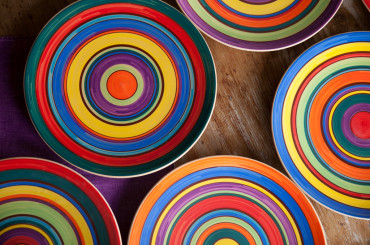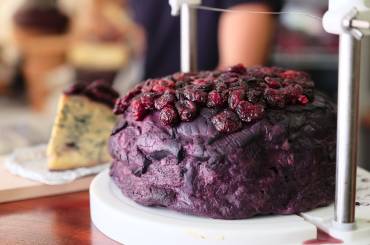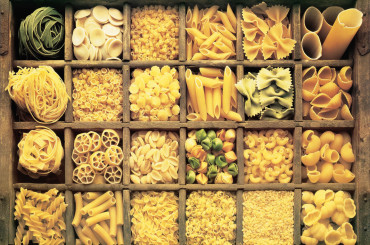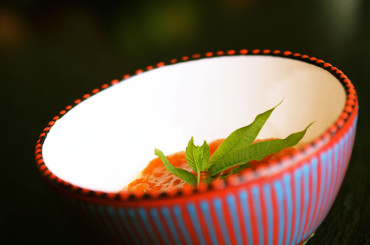
Oct52015by DishesOnly | News
Leafs are turning gold, the weather is getting windy, and we finally get to wear our favorite scarfs and cozy sweaters. And that is the time we all know the fall season is HERE. We have waited for it for so long and these are the 4 REASONS to FALL IN LOVE with this beautiful time of the year even more: GOING OUT TO BRUNCHES All of us have special seasonal traditions that we carry in our hearts and one of mine is – Going Out to Brunches during the Fall. I cannot wait for this every year and it is definitely one of my favorite routines. First of all, the weather is perfect for it. It is neither hot or cold, it is just simply what we need. Second of all, is it so beautiful outside. Autumn brings these inspiring colors that make us feel so happy once we are walking along the streets. Leaves are turning gold, red and brown; sun is shinning in a special way and the nature is just so gorgeous that you suddenly feel so relaxed. And last but not least, the are so many AMAZING PLACES in Rome to visit for brunches. Here is a list of my favorites: Coromandel Via di Monte Giordano, 60 Sat-Sun, 11am-3pm If you are lover of the eggs Benedict, pancakes, bagels, and croque madame – Coromandel is a right place for you. Moreover, the design and service offered by the restaurant are excellent. Grand Hotel de la Minerve Piazza della Minerva, 69 Sun, 12am-3pm One of the Best Roof Top places to visit in Rome. The view is...

Sep232015by DishesOnly | News
Cheese 2015 is just concluded. It has been a successful edition attended by over 270,000 visitors in 3 days, from 18th to 21th of September. Bra, in the province of Cuneo, has held this international celebration. It has hosted over 300 exhibitors from 23 countries by promoting opportunities for education and entertainment, inspired by Slow Food values. This year’s event theme was focused on the mountain’s ecosystems related to cheesemakers. In the last fifty years many traditional cheesemaking activities have been stopped and pastures have been abandoned, with a lack of transmission of precious knowledge. So it seems urgent to protect the extraordinary biodiversity (of ecosystems, plant varieties, animal species, food and culture) found in the world’s mountain areas. But fortunately the mountains are still home to an incredible heritage of cheeses produced by artisanal techniques and the use of freshly milked raw milk. Products of extraordinary quality are the result of this process that involved the practice of transhumance (season migration to summer pastures). The Biodiversity Piazza is the place where visitors could taste mountain products from around the world. They have found cheeses, honey, vegetables and fruit, legumes and wild herbs grown on mountainsides all over the world: from the Andes to the Caucasus, via the Pyrenees, the Alps and the Apennines. Also a team of Slow Food network chefs prepared specialities associated with mountain traditions. Cheese 2015 offered an awareness and responsibility towards the related issues, such as animal welfare, sustainable management of landscapes, milk quotas and so on. Moreover it has represented a moment to bring together this consciousness with idea...

Sep72015by DishesOnly | News
“….maccarone tu m’hai sfidato e io me te magno”. ( tratto dal film Un’Americano a Roma) L’incipit di quest’articolo è dedicato all’indimenticato ed indimenticabile Albertone nazionale che fece e tuttora fa ridere generazioni e generazioni di italiani ( che oltre a ridere ci si identificavano ben bene nella battuta riportata , soprattutto nell’orgoglio di rigirare …attenzione, solo con la forchetta,abborriamo forchetta e cucchiaio….quei du spaghetti.!!!) Pasta . Amore . Fantasia . Questa è l’Italia ( e dai, per un po’, solo per un po’, dimentichiamoci di tutte le storture-scandali-orrori- bruttezze e cose che non vanno e parliamo di lei , che ci ha fatto conoscere ed invidiare in tutto il mondo). A lei che è ogni giorno messa a tavola con amore; a lei che ogni giorno viene arricchita con sughi diversi, a lei che viene inopinatamente riproposta in tutto il mondo. La Pasta. Mi piace continuare questo articolo semiserio con un estratto molto significativo ed altamente rappresentativo della MANIA TUTTAITALIANA per la pasta. “…il nostro più che un popolo è una collezione . Ma quando scocca l’ora del pranzo o della cena , seduti davanti ad un piatto di spaghetti, gli abitanti della Penisola si riconoscono Italiani….. Neanche il servizio militare, neanche il suffragio universale ( non parliamo del dovere fiscale) esercita un uguale potere unificante “ . L’unità d’Italia sognata dai padri del Risorgimento , oggi si chiama pastasciutta…” (da C. Marchi , Quando siamo a tavola , Rizzoli, 1990). Si parla di pasta e ben 21 regioni si mettono sull’attenti, dal Piemonte, al Friuli per tutto lo stivale fino a Sicilia e Sardegna. Non c’è dubbio:...

Aug312015by DishesOnly | News
When we think of glass, the mind leaps instantly to Venice, Murano and the gorgeous blown glass created there. What we perhaps don’t think of are the other techniques apart from glass blowing – like fusing, casting and glass sculpture, to name a few. The results of these applications are often surprising, such as when a glass plate appears to made of ceramic. To understand how this is done, we filmed Emanuela, one of the artisans at Studio Forme Roma, through the process of making a sculpted glass plate from our Bambù collection. The video below shows just how these objects of rare beauty are born. Sculpted glass “The process is complex; oftentimes the plate will crack in the kiln and the mold has to be thrown away and rebuilt from scratch each time”, explains Emanuela. “You start by making the mold out of clay and applying the pattern. Then you fill it with refractory material and when it’s dry, the clay is removed and the negative of the mold remains. This is filled with colored or clear glass and then put in the kiln at 900 degrees. Once it cools, the mold is thrown away and you have a flat slab of glass with the decoration incorporated. To give shape to the plate, the slab is placed in a concave mold and put back in the kiln at a lower temperature. At this point the plate is finished“. Interesting, right? If you agree, and you’d like to give someone a truly original gift, we have an idea for you: if you purchase a one-of-a-kind piece from...

Aug312015by DishesOnly | News
Quando pensiamo al vetro ci viene subito in mente Venezia, Murano, i meravigliosi vetri soffiati. In realtà esistono diverse tecniche di lavorazione del vetro come la vetrofusione, la stampa o la vetro-scultura, solo per citarne alcune. I risultati di queste applicazioni sono sorprendenti: piatti di vetro che sembrano di ceramica! Come è possibile? Abbiamo seguito Emanuela, una delle artigiane dello Studio Forme Roma nella realizzazione di un piatto in vetro-scultura della nostra collezione Bambù e vi raccontiamo, aiutati da un video, come nascono questi oggetti unici e di rara bellezza. La vetro-scultura “La lavorazione è complessa; spesso il piatto si crepa nel forno ed il calco viene buttato e rifatto ogni volta da capo” ci spiega Emanuela. “Si inizia con la creta e si modella il decoro; poi viene fatto un colaggio di materiale refrattario e quando è asciutto viene girato, si butta la creta a vista e resta il negativo del calco. Questo viene riempito di vetri colorati o trasparenti e viene messo in forno a 900 gradi. Quando è freddo si distrugge il calco e resta la lastra di vetro piatta con il decoro realizzato. Per dare la forma al piatto la lastra viene rimessa in forno ad una temperatura più bassa e fatta flettere in un calco concavo. A questo punto il piatto è finito.” Interessante, vero? Pensate che potreste fare un regalo originalissimo: se acquistate un pezzo unico delle nostre collezioni Forme Roma vi invieremo il video di come è stato realizzato, rendendo ancora più esclusivo il vostro dono! Cliccate qui. Tanti modi per apparecchiare la tavola in modo creativo con piatti di vetro. Dopo...

Jul132015by DishesOnly | News, Recipes
Yes, there really is a World Tomato Week, and it was celebrated at Expo 2015 from June 14-21 – in Italy, appropriately, the world’s third largest tomato producer. The tomato is the quintessential summer food. Its reassuring, refreshing presence accompanies practically every summer dish, and not just in Italy: garden salads, pasta and rice salads, insalata caprese, Greek salad, sandwiches, burgers, soups like gazpacho in Spain or Manhattan-style clam chowder in the States, tomato mousse, even tomato ice cream. And let’s not forget that summer brunch classic, the Bloody Mary – which, if you’ve never had one made from fresh tomatoes (peeled and seeded, of course) instead of processed tomato juice, you really need to try! Whether fresh, sundried or pureed, the tomato is as versatile as it is indispensable. Aptly called pomodoro in Italian (meaning ‘golden apple’), it is a concentration of dietary virtues: water, protein, organic acids, antioxidants, vitamins A and C, and practically no sugars (1%). It is the undeniable king of the Mediterranean diet. And thanks to its more than 1,000 varieties, people around the world can enjoy it throughout the year. Though let’s be honest, it’s always at its best in the summer. The list of tomato varieties can be broadly divided into salad tomatoes and sauce tomatoes, depending on factors like juiciness, pulpiness, skin thickness and flavor – which is more variable than you may think, in that some tomatoes taste better cooked than raw, while others should only be eaten fresh. The names are seductive in and of themselves: Perino, Pero d’Abruzzo, Regina, Costoluto Fiorentino, Pizzutello….. There’s the Camone, whose green ‘collar’...





